Check out Lobo on YOU TUBE:
•••••••••••••••••••••••••••••••••••••••••••••••••••••••••••••••
www
.youtube.com/user/travelswithlobo
**********************************************************
Imiloa Astronomy Center and Linguistic Survival
This is one place in Hilo where attendance must be directly related to the weather. Since Hilo is on the windward side of Big Island and it rains a lot, the Imiloa Astronomy Center may very well base its manpower requirements for any given day on the weather forecast.
December 23, 2007 dawned as a typical "winter´s day" in Hilo. It was relatively warm with temperatures above 75 degree Fahrenheit accompanied by plenty of liquid sunshine as the heavens opened up to make the rain forests around Hilo even greener.
This required a quick revision of our original plans.
Come to think of it, our original plan to spend two days at Hawaii Volcanoes National Park was already revised yesterday. We had spent an ambitious day in pleasant weather covering the main attractions making a return today unnecessary
.
Given the pouring rain of today, the Imiloa Astronomy Center looked like a great plan since it was indoors, out of the rain.
Located at 600 Imiloa Place, on the grounds of the University of Hawaii, the Astronomy Center is an interesting and informative place to visit.
The last astronomy center I visited in the summer of 2002 was the granddaddy of them all - the Carl Zeiss Planetarium in Jena, Germany.
A projection planetarium is a darkened dome covered building containing opto-mechanical projection instruments. These instruments can re-create the illusion of the heavens on any given night complete with all the stars, planets, meteors, etc. Where it is impossible to connect stars in the sky with lines to produce a visual effect of the endless constellations that abound in a night sky, this is no problem in a planetarium. Lines can be traced all over the domed ceiling to show the Big Dipper, the Little Dipper and all the constellations
. It is a great learning tool for those interested in astronomy.
Seating is such that the comfortable, high backed, reclining theatre-like seats give a view of most of the skies projected on the dome.
The science has advanced to the point where a virtual sound and light show can accompany the projection of the firmaments. This was the case when in Jena planetarium where I was thrilled to catch a non-live Pink Floyd concert. Imagine listening to "Dark Side of the Moon" and other songs accompanied by the astronomical projections in a planetarium. It was unforgettable.
The Jena Planetarium is the world´s oldest since it was established in 1926 operating with the original Carl Zeiss Planetarium projector.
The Carl Zeiss Optical Company, named after its founder Carl Friedrich Zeiss (1816 -1888), was originally based in Jena, Germany. The company has been a world leader in optics and planetarium projectors which are used world wide including here in Hilo, Hawaii
.
The first thing that is noteworthy about the Imiloa Astronomy Center is its eye catching architecture. The conical origins of its roof symbolize the three main mountains of Big Island (Hawaii) - Mauna Kea, Mauna Loa and Hualalai.
In the planetarium the permanent offering is a show called "Mauna Kea: Between Earth and Sky".
The following is a quote from their website:
Imagine yourself on a Polynesian voyaging canoe, leaning into the wind and following currents that are carrying you to a strange new land. Gaze into the night sky and search for Hokupa`a, your guide star. Then look farther, past planets, galaxies and swirling nebula-and even deeper, back into the beginning of the universe. Maunakea: Between Earth and Sky will take you from the beginning of time to the farthest reaches of the heavens. You will also be captivated with the Hawaiian story of Pele and Poliahu, the creation of the Hawaiian islands, and a fly-through of one of the observatories on the summit of Maunakea.
The program did not disappoint as we were thrilled with the new knowledge which we acquired about Hawaii as a result of this show.
The experience must be even better now (March 30, 2008), as the Imiloa Astronomy Center is the world´s first planetarium to install (January 2008) "3D stereoscopic capabilities"
.
This was achieved by the installation of four cinema-quality Sony SXRD 4K digital projectors, definiti HD lenses, DigitalSky 2 visualization software, and 3D technology from Infitec.
As the first permanent definiti 3D theater, the `Imiloa Planetarium is now distinguished as the first 3D planetarium in the world.
Suffice it to say that even without the latest upgrades, we found this presentation extremely interesting as it outlined for us the volcanic creation of the Hawaiian Islands, the arrival of its people, animals and plant life from Polynesia and the role that Mauna Kea played in the fables of Hawaiian culture.
We walked out of that theatre feeling a lot closer to this wonderful land.
Thirsty for more knowledge about the Hawaiian Islands, we spent another two hours closely examining the various exhibits displayed in a museum-like manner
.
The essence of information gathered is contained in my photos which speak for themselves.
I would only like to comment on one exhibit - the status of the Hawaiian language - which had special meaning to me.
Growing up in Canada and being somewhat of a "Francophile", I have closely watched with fascination the struggle to maintain the French language in Quebec and Canada in general.
The language issue could conceivably have been ended at the Battle of the Plains of Abraham. It took place in Old Quebec in 1759 when the British, led by General James Wolfe, defeated the French, led by General Louis-Joseph Montcalm.
This in essence was the battle for the future of Canada. The results of this battle would decide that henceforth, the French colony of Quebec would be under British rule and subject to British law
.
This stance was softened when under the Quebec Act of 1774, the use of the French language was reinforced with the restoration of the French Civil Code for matters not relating to criminal law or public policy. The act also guaranteed the practice of the Catholic faith. At the time Quebec was almost 100% Catholic and predominately French speaking. These two measures ensured that the French language would have a nt role in Quebec.
In 1867 the expanded Canada would become an independent country that despite its independence to this day still regards the monarch of Great Britain - Queen Elizabeth II - as the Queen of Canada.
Over time, a major erosion in the use of the French language occurred which prompted calls for independence by Quebec nationalists and for stronger laws to protect the French language from more moderate forces.
As a result of these forces, language rights were codified in two landmark pieces of legislation
.
On the federal level, the Official Languages Act was passed in 1969 giving the French and English language equal status for both languages in all services provided by the federal government including the courts.
"La Loi 101" enacted by the Quebec Legislative Assembly in 1971 made French the official working language of Quebec. It included such things as English lettering on public signs being only one-third the size of the French lettering and required children to go to French-speaking schools unless at least one parent had been educated in the English language in Quebec.
As a result, use of the French language prospered.
Evidence of that would be apparent, for example, in Ottawa where I spent 35 years of my life. French is a language that can be heard frequently in the streets of Ottawa as about one third of the population is French speaking. Across the Ottawa River, in the city of Gatineau, which is located in the Province of Quebec, French is almost the exclusive language
.
The French language very much tes Quebec to this day and is relevant in the rest of Canada as well.
In Prince George, British Columbia which is a long way from Quebec, I am an occasional teacher in the French Immersion Program which starts in Grade 1 and continues to Grade 12. The program seems to be achieving its goals as the students are quite conversant in the French language even though in the rest of the city, the language is barely heard.
For those readers living outside of Canada, French Immersion means that all courses are offered in the French language. Because of this, I am presently brushing up on my high school math in French as this is giving me the greatest challenge.
The question may also arise, why take French Immersion in a part of Canada where no French is spoken. The answer lies in the job market. If aspiration includes to someday working for the federal government anywhere in Canada, it is a great asset to be bilingual
. Parents are certainly aware of this and a fair number would like to steer their children in that direction. French Immersion is also a form of streaming as generally only the better students are up to the academic rigors of an immersion program.
The French language has not only survived but prospered in Canada due to vigilance and determination to keep a culture and a language alive in difficult circumstances. Nowhere else in the world have I seen the linguistic accommodation that exists in Canada between French and English.
My comments of course would be laughable to Quebec nationalists who see themselves "victimized" at every turn by "les anglais". Theirs is an all-or-nothing approach of "independence at all cost". While this approach came within a whisker (less than a 1% margin) of winning a referendum in 1995, since then the threat of separatism in Quebec has fortunately greatly receded.
Upon further reflection, I conclude that I may be missing the main point as my linguistic and cultural comments do not take into account the state of First Nations or Innu languages, meaning the languages of the indigenous people of Canada
.
Perhaps here lies the real parallel with Hawaii and not the example of French in Canada.
But even this parallel breaks down when a closer comparison is made. While the indigenous people of Hawaii spoke one common language, the indigenous people of Canada speak or spoke hundreds of languages resulting in an "apples" and "oranges" comparison.
As a result of writing this blog I am also less disturbed by the treatment received by the indigenous people of Hawaii, linguistic or otherwise.
This change of heart was brought about by the realization that the treatment meted out to indigenous people here in Canada may have been worse than that reserved for indigenous people of Hawaii.
The most infamous experiment gone wrong was the saga of Canada´s 69 church run, government funded, well-meaning "residential schools" which were implemented around the turn of the 20th century
.
Indigenous children were removed from their parents to these far-away residential schools with the intent of taking the "indigenous" out of the students and turning them into clones of Christian society. One of the main vehicles of this process was to abandon the indigenous languages and culture in favour of the English language and culture. This was perceived as being the best way to prepare the students for "white society".
This action in and of itself was questionable enough, but must be viewed somewhat in the perspective of the times. Many actions taken in the past can be seriously second guessed based upon today´s standards.
What was unacceptable, even by the standards of that time period, was the wide spread physical, emotional and ual abuse inflicted upon the indigenous children by the persons responsible for their education. These persons who committed the abuse were all members of various religious orders with the Catholic Church playing the largest role
. Obviously the ual abuse was not committed by everyone involved with the school but nevertheless over the years a very serious problem has been identified in this area.
The last of the schools was not abolished until 1990.
It is this sordid legacy which is still being sorted out today by court actions and apologies from the highest places.
It would appear that there is no such sordid large scale mistreatment of the Hawaiian people.
Given this background I was very interested in seeing how the Hawaiian language and culture had fared over the years.
However, starting with that day in January 1778 when Captain James Cook of the British Royal Navy landed near what is now the town of Waimea on the island of Kauai, the fate of the Hawaiian language was sealed to suffer a long decline and near extinction.
Quoting from one of the information panels at the museum, "An ancient Hawaiian proverb emphasizes that the existence of a people depends on the life and of its language"
.
By that measure, the "Hawaiian" has just about gone out of Hawaii.
Because of my interest in this linguistic question, I never failed when given the opportunity, to ask a standard question of anyone appearing to be native Hawaiian. "Do you speak Hawaiian?" The answer in every case was in the negative.
Furthermore, almost no one showed any interest or regret with respect to the language issue.
I was disappointed by this response as I had gotten much pleasure over the years in learning languages and their inherent cultures.
On our last night in Honolulu, we ate at the foremost "Hawaiian food" restaurant in town. Surely the owner, a Hawaiian by all appearances, would speak the language. Once again, it was the same negative answer.
However, his children were taking Hawaiian language courses at the school which nevertheless was a sign of linguistic progress.
The only ray of hope is the fledgling Hawaiian Language Immersion program which has been started in some public schools. The challenge is finding qualified teachers and adequate resources.
The most shocking aspect of the Hawaiian language was its abolition as a language of instruction in 1893 by the Republic of Hawaii
. That was the year the sugar barons and other business men conspired to overthrow the Hawaiian monarchy. This ban on Hawaiian as a language of instruction in schools lasted an incredible 100 years.
This of course explains the gap in language knowledge evident in generations of Hawaiians.
It was a policy of cultural genocide which was designed to ensure the tion of the "Caucasian" race and perhaps ensure integration into the English speaking United States of America.
The Hawaiian language in the present day is making a modest comeback as the immersion language programs would suggest.
It is encouraging but one senses that Don Quixote had a better chance against the windmills than the possibilities of this program becoming widespread.
Coming Soon:
Playing a Hunch and Finding Beautiful Places
Imiloa Astronomy Center of Hawaii and Linguistics
Sunday, December 23, 2007
 Hilo, Hawaii, United States
Hilo, Hawaii, United States
Other Entries
-
75Heading Home to Prince George
Oct 0480 days prior Prince George, Canadaphoto_camera31videocam 0comment 0
Prince George, Canadaphoto_camera31videocam 0comment 0 -
76Alaska / Yukon - THE EPILOGUE
Oct 0579 days prior Prince George, Canadaphoto_camera0videocam 0comment 0
Prince George, Canadaphoto_camera0videocam 0comment 0 -
77Hawaii - Preparing for the Trip
Dec 158 days prior Prince George, Canadaphoto_camera3videocam 0comment 2
Prince George, Canadaphoto_camera3videocam 0comment 2 -
78Hawaii - How Not to Leave on a Trip
Dec 167 days prior Prince George, Canadaphoto_camera0videocam 0comment 0
Prince George, Canadaphoto_camera0videocam 0comment 0 -
79Waikii Beach - Getting Familiar
Dec 176 days prior Honolulu, United Statesphoto_camera49videocam 0comment 0
Honolulu, United Statesphoto_camera49videocam 0comment 0 -
80Waikiki Beach - Scream and Stomp
Dec 185 days prior Honolulu, United Statesphoto_camera4videocam 0comment 0
Honolulu, United Statesphoto_camera4videocam 0comment 0 -
81Honolulu - A Hard Day's Walk
Dec 185 days prior Honolulu, United Statesphoto_camera78videocam 0comment 0
Honolulu, United Statesphoto_camera78videocam 0comment 0 -
82Honolulu - Pearl Harbour
Dec 185 days prior Honolulu, United Statesphoto_camera91videocam 0comment 0
Honolulu, United Statesphoto_camera91videocam 0comment 0 -
83Diamond Head
Dec 194 days prior Honolulu, United Statesphoto_camera39videocam 0comment 1
Honolulu, United Statesphoto_camera39videocam 0comment 1 -
84Hanauma Bay and Other Snorkeling Stories
Dec 194 days prior Honolulu, United Statesphoto_camera17videocam 0comment 0
Honolulu, United Statesphoto_camera17videocam 0comment 0 -
85Of Sunrises, Banana Pancakes and Latter Day Saints
Dec 203 days prior Laie, United Statesphoto_camera47videocam 0comment 0
Laie, United Statesphoto_camera47videocam 0comment 0 -
86Oahu - "Hanging Ten" on the North Shore
Dec 203 days prior Haleiwa, United Statesphoto_camera32videocam 0comment 0
Haleiwa, United Statesphoto_camera32videocam 0comment 0 -
87Haleiwa - Huli Huli Chicken and Shave Ice
Dec 212 days prior Haleiwa, United Statesphoto_camera19videocam 0comment 2
Haleiwa, United Statesphoto_camera19videocam 0comment 2 -
88The Dole Plantation
Dec 212 days prior Wahiawa, United Statesphoto_camera69videocam 0comment 0
Wahiawa, United Statesphoto_camera69videocam 0comment 0 -
89A Walk on Waikiki Beach, then "iflygo" to Hilo
Dec 212 days prior Hilo, United Statesphoto_camera48videocam 0comment 0
Hilo, United Statesphoto_camera48videocam 0comment 0 -
90Hawaii Volcanoes National Park - Crater Rim Drive
Dec 221 day prior Hilo, United Statesphoto_camera92videocam 0comment 2
Hilo, United Statesphoto_camera92videocam 0comment 2 -
91Chain of Craters - Hawaii Volcanoes Nat. Pk.
Dec 23earlier that day Hilo, United Statesphoto_camera54videocam 0comment 1
Hilo, United Statesphoto_camera54videocam 0comment 1 -
92Imiloa Astronomy Center of Hawaii and Linguistics
Dec 23 Hilo, United Statesphoto_camera59videocam 0comment 0
Hilo, United Statesphoto_camera59videocam 0comment 0 -
93Puna Coast and East Point Drive
Dec 23later that day Hilo, United Statesphoto_camera93videocam 0comment 0
Hilo, United Statesphoto_camera93videocam 0comment 0 -
94The Hamakua Coast
Dec 241 day later Honokaa, United Statesphoto_camera94videocam 0comment 0
Honokaa, United Statesphoto_camera94videocam 0comment 0 -
95Christmas Day 2007: Hilo to South Point
Dec 252 days later Hilo, United Statesphoto_camera81videocam 0comment 0
Hilo, United Statesphoto_camera81videocam 0comment 0 -
96Christmas Day 2007 - South Point to Kailua-Kona
Dec 263 days later Kailua-Kona, United Statesphoto_camera38videocam 0comment 0
Kailua-Kona, United Statesphoto_camera38videocam 0comment 0 -
97Kailua - Kona - A Walk Through Kona
Dec 263 days later Kailua - Kona, United Statesphoto_camera60videocam 0comment 0
Kailua - Kona, United Statesphoto_camera60videocam 0comment 0 -
98Finding Hawaiian History and "Little Switzerland"
Dec 263 days later Waimea, United Statesphoto_camera86videocam 0comment 0
Waimea, United Statesphoto_camera86videocam 0comment 0 -
99Big Island - Mauna Kea - Life at 13,000 Feet
Dec 274 days later Waimea, United Statesphoto_camera87videocam 0comment 0
Waimea, United Statesphoto_camera87videocam 0comment 0 -
100Parker Ranch - Waimea (Kamuela)
Dec 274 days later Waimea, United Statesphoto_camera45videocam 0comment 0
Waimea, United Statesphoto_camera45videocam 0comment 0 -
101How Not to Fly From Big Island to Maui
Dec 285 days later Lahaina, United Statesphoto_camera2videocam 0comment 0
Lahaina, United Statesphoto_camera2videocam 0comment 0 -
102So What Did "$150 a Day" Get Us in Maui?
Dec 296 days later Lahaina, United Statesphoto_camera53videocam 0comment 0
Lahaina, United Statesphoto_camera53videocam 0comment 0 -
103Kapalua and the Mercedes Benz Championship
Dec 296 days later Kapalua, United Statesphoto_camera34videocam 0comment 0
Kapalua, United Statesphoto_camera34videocam 0comment 0 -
104Do Not Drive a Rental Car on This Road
Dec 296 days later Kapalua, United Statesphoto_camera80videocam 0comment 1
Kapalua, United Statesphoto_camera80videocam 0comment 1 -
105Wailuku - Live in Wailuku and Work in Kahului
Dec 307 days later Wailuku, United Statesphoto_camera73videocam 0comment 0
Wailuku, United Statesphoto_camera73videocam 0comment 0 -
106The Road to Hana
Dec 318 days later Hana, United Statesphoto_camera132videocam 0comment 0
Hana, United Statesphoto_camera132videocam 0comment 0 -
107Lahaina - If you Want Action, This is the Place
Jan 019 days later Lahaina, United Statesphoto_camera78videocam 0comment 0
Lahaina, United Statesphoto_camera78videocam 0comment 0 -
108Haleakala - Maui's Top Site - Part 1
Jan 019 days later Pukalani, United Statesphoto_camera112videocam 0comment 0
Pukalani, United Statesphoto_camera112videocam 0comment 0 -
109Haleakala - Maui's Top Site - Part 2
Jan 019 days later Pukalani, United Statesphoto_camera127videocam 0comment 3
Pukalani, United Statesphoto_camera127videocam 0comment 3 -
110Why Have I Not Been Blogging? -Real Time Message
Jan 0210 days later Pukalani, United Statesphoto_camera0videocam 0comment 0
Pukalani, United Statesphoto_camera0videocam 0comment 0

 Hilo, Hawaii, United States
Hilo, Hawaii, United States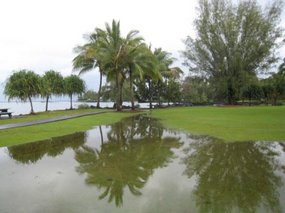
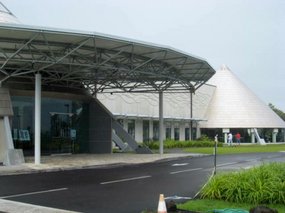
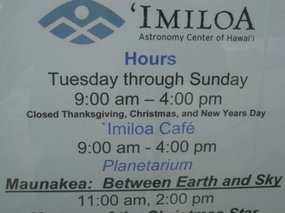
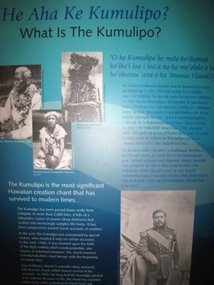
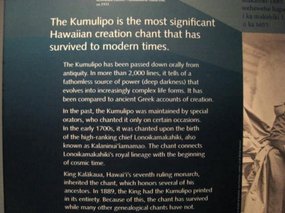

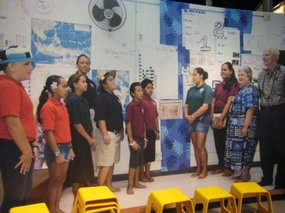

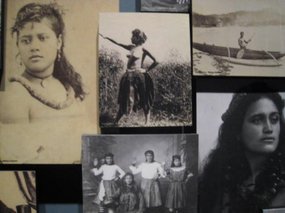
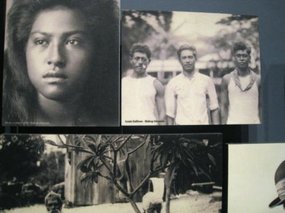
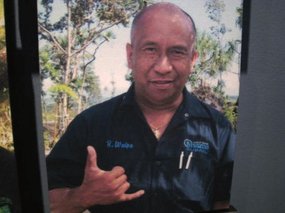
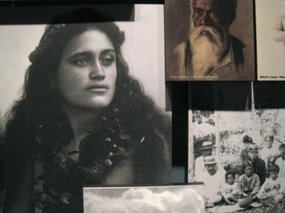
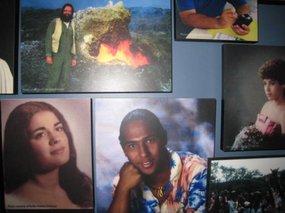
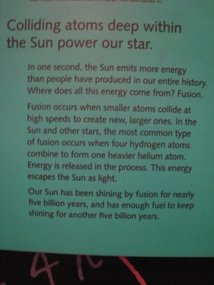
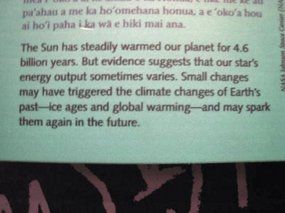


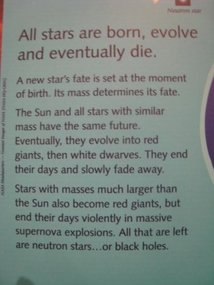
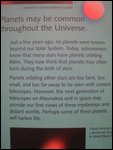
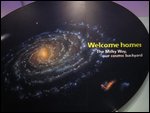
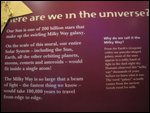
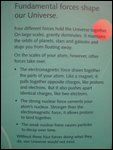
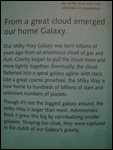
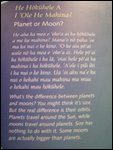
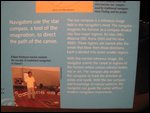
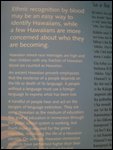

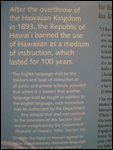
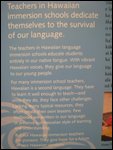
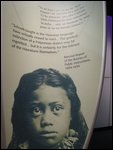
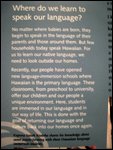



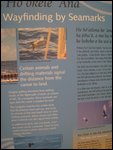
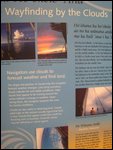
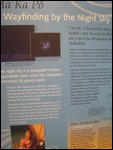
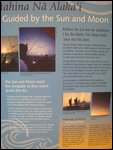
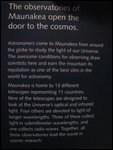
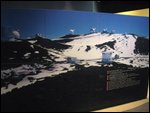
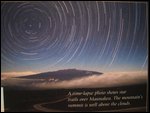

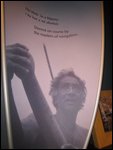
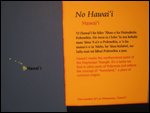
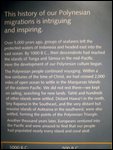
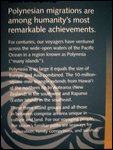
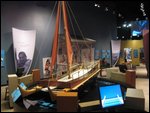
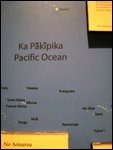
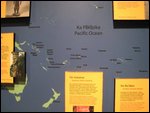
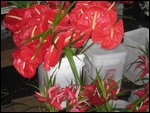
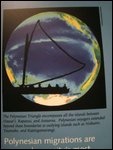
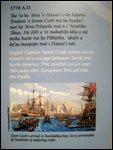

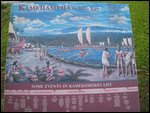
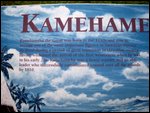
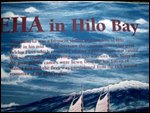
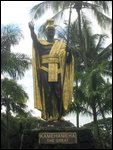
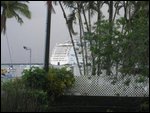
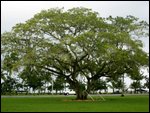
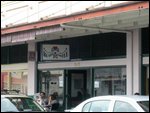

2025-05-22